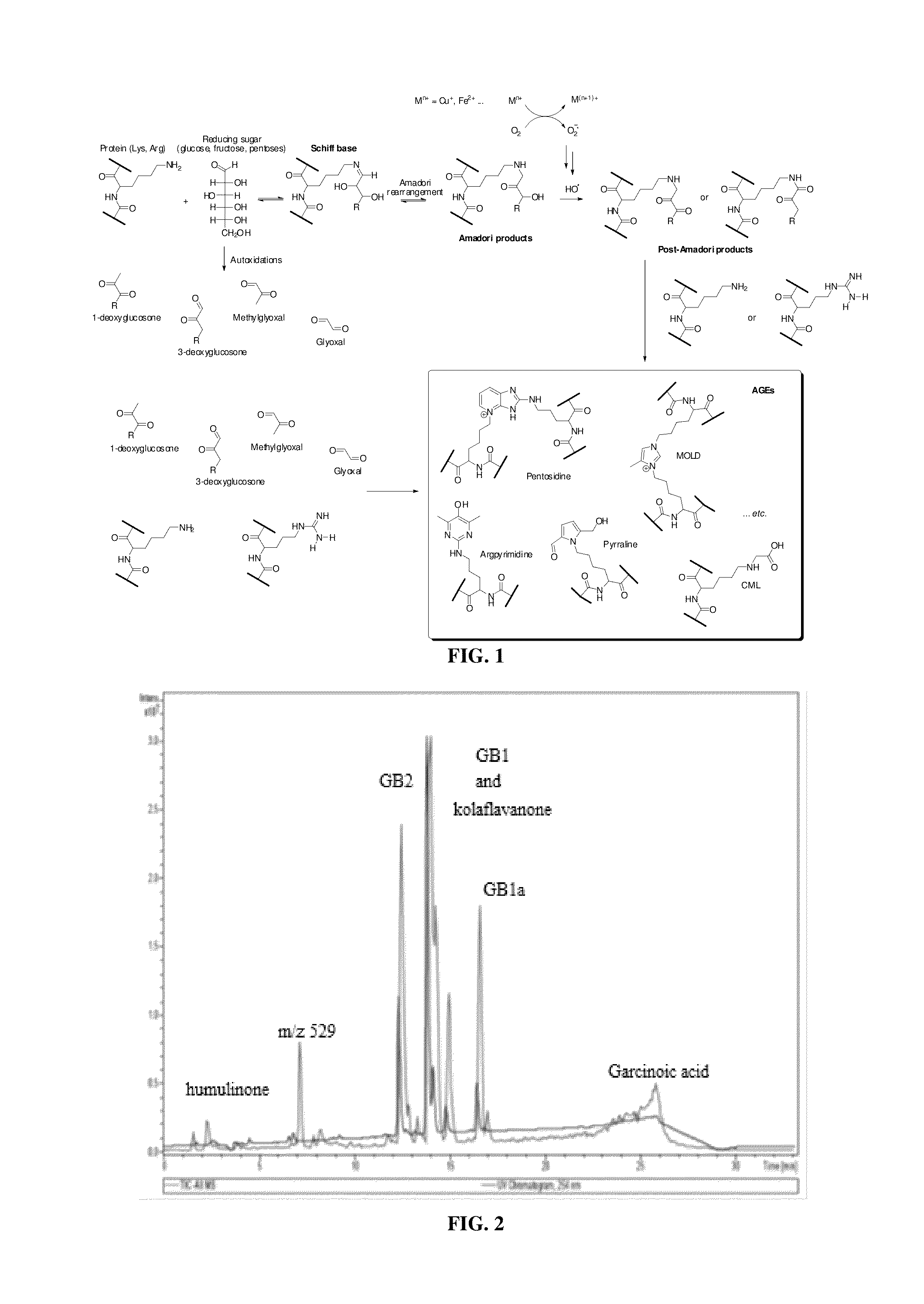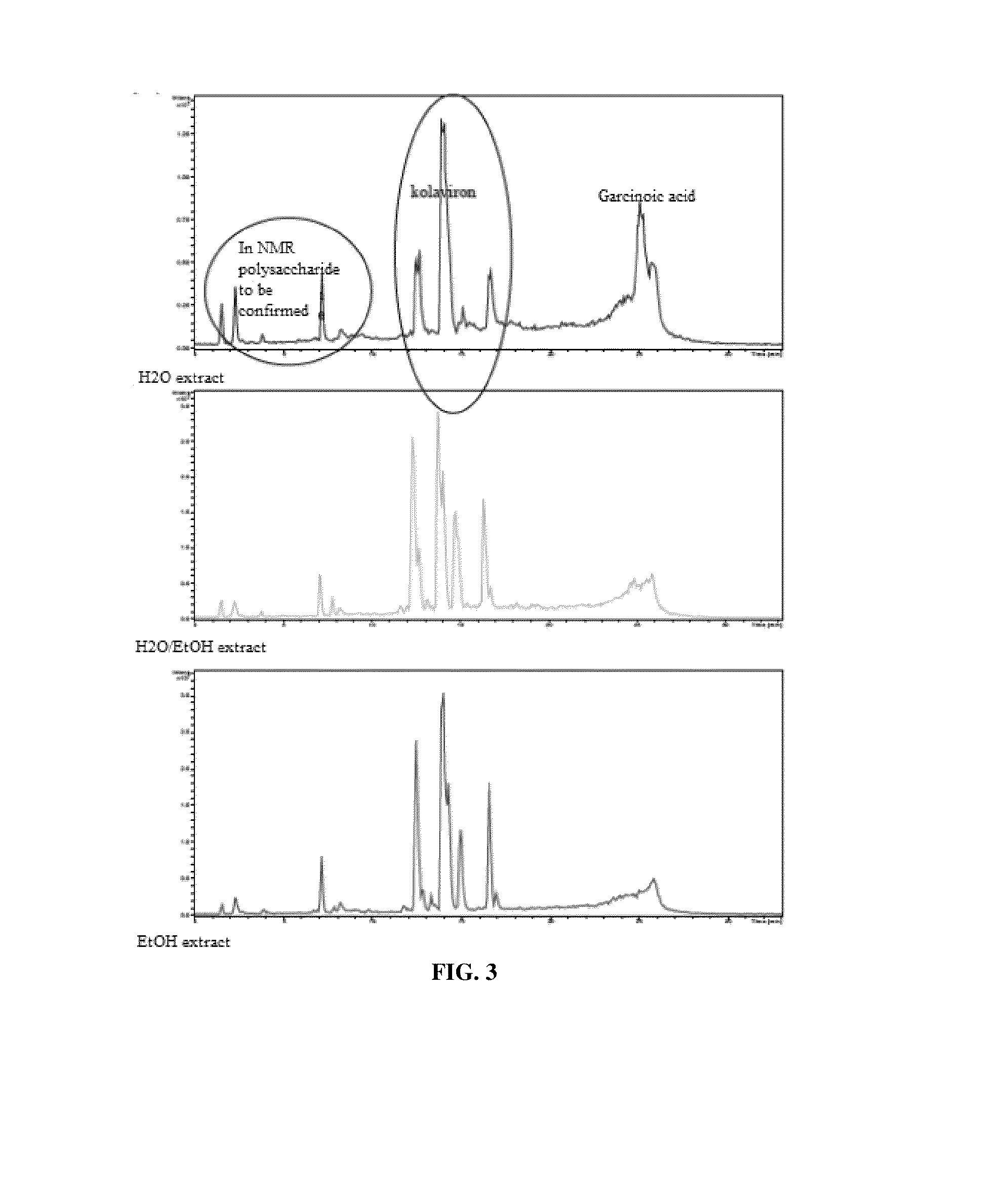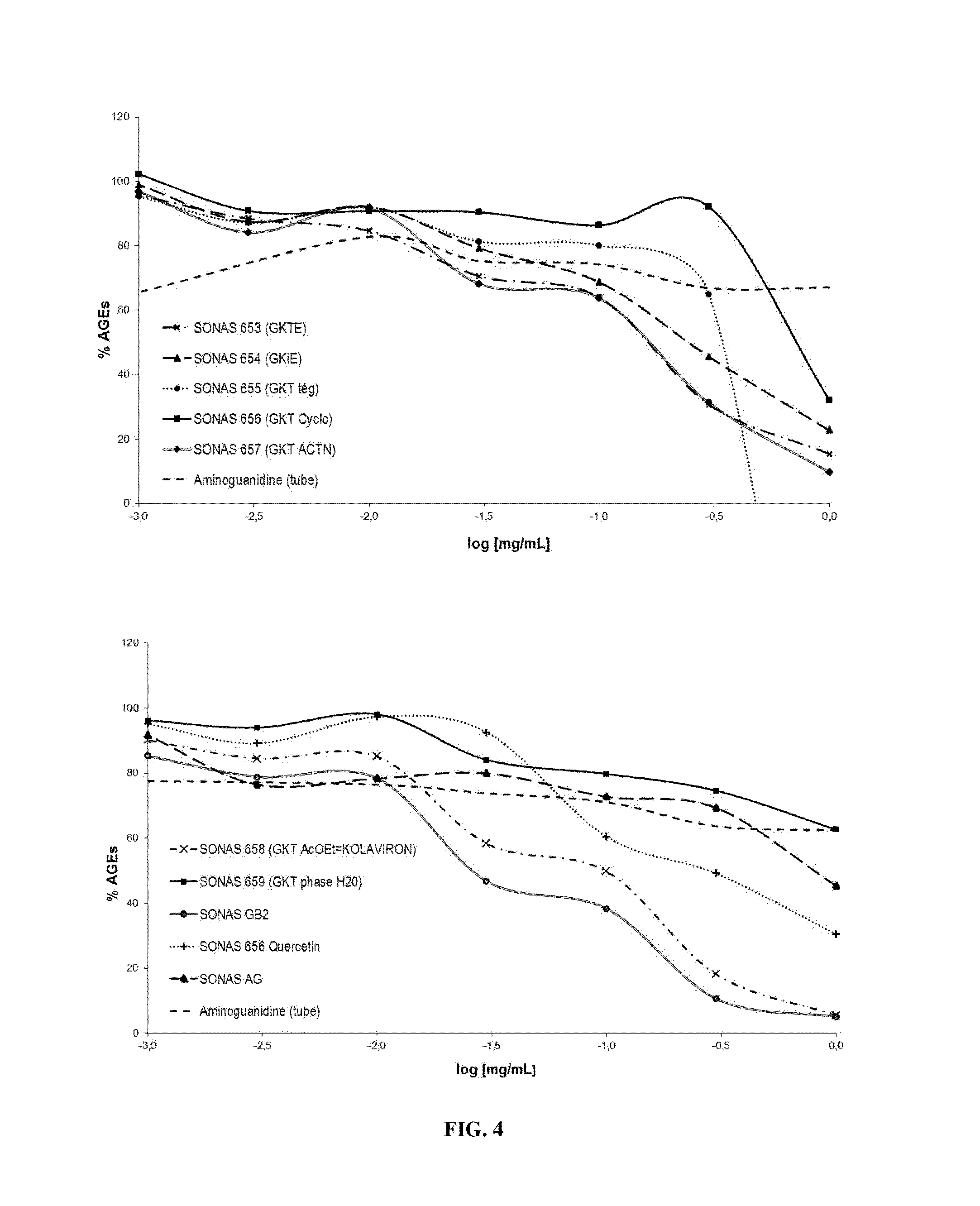Anti-glycation agent comprising a garcinia kola extract or fraction
a technology of garcinia kola and antiglycation agent, which is applied in the direction of plant ingredients, biocide, plant growth regulators, etc., can solve the problems of skin aging, loss of elasticity, drying, thinning, etc., and achieve the effect of not having a significant anti-glycation activity for skin proteins
- Summary
- Abstract
- Description
- Claims
- Application Information
AI Technical Summary
Benefits of technology
Problems solved by technology
Method used
Image
Examples
example 1
Preparation of a Garcinia kola Extract According to the Invention
Material and Methods
[0108]Two batches of Garcinia kola were tested: one from Togo and the other of unknown origin. The two batches have the same HPLC-UV-MS profile.
Extraction
[0109]Extractions on a Büchi Speed Extractor were performed using, as the solvent: water, ethanol and a water / ethanol (50 / 50) mixture under the following conditions:[0110]extraction cells: 120 mL (volume completed with sand 0.3-0.9 mm, Büchi)[0111]temperature: 100° C.[0112]pressure: 100 bar[0113]collection vial: 240 mL[0114]rinsing with solvent: 1 min[0115]rinsing with gas: 1 min
[0116]The pressurized extraction cycles are performed according to the table below:
extraction cellcycleheatingmaintenancedrainage15 min02 min21 min10min2 min31 min10min2 min
[0117]The extracts were then evaporated with the rotary evaporator (50° C.), after filtration on cotton, to obtain the different dry extracts.
[0118]A kolaviron extraction (GB1, GB1a, GB2 and kolaflavanon...
example 2
Preparation of a Garcinia kola Extract According to the Invention
[0135]200 mg of the raw ethanol extract obtained in example 1 were fractioned on silica gel (Flash column, gradient from 100% dichloromethane to 100% MeOH), 4 fractions were obtained:[0136]F1=garcinoic acid[0137]F2=GB1, GB1a, GB2, kolaflavanone[0138]F3=GB1, GB1a, GB2, kolaflavanone+polyol(s)[0139]F4=fraction enriched with polyol(s)
Results
[0140]The absence of alkaloids in the extract was verified by using Dragendorff, Mayer and Bouchardat reagents. A TLC was also performed using the Dragendorff reagent as a developer. No spot was developed by this reagent, which confirms the absence of alkaloids in the extract.
[0141]The chromatographic profile at 254 nm essentially shows the presence of kolaviron (FIG. 2). HPLC-MS makes it possible to identify (TIC) several compounds that cannot be detected in UV: alpha acids: humulinone and an oxide derivative, as well as a tocotrienol, garcinoic acid. The peak at 7.2 min (m / z 529) cou...
example 3
Physicochemical Properties of the Ethanol Extract—Biflavonoid-Rich Extract
Total Polyphenol Assay
[0143]The quantification by HPLC-UV of the ethanol extract shows that it contains 48% biflavonoids (quantification at 290 nm expressed in equivalence of the pure biflavonoid GB2 used as an external standard). The aqueous extract contains 5% biflavonoids when the same method is used.
Physicochemical Data of the Extract
[0144]Violet-brown colored extract
[0145]Soluble in water, MeOH, EtOH, DMSO
[0146]UV spectrum: 290 nm
[0147]Melting point: 168° C. (Köpfler bank)
PUM
| Property | Measurement | Unit |
|---|---|---|
| Temperature | aaaaa | aaaaa |
| Fraction | aaaaa | aaaaa |
| Fraction | aaaaa | aaaaa |
Abstract
Description
Claims
Application Information
 Login to View More
Login to View More - R&D
- Intellectual Property
- Life Sciences
- Materials
- Tech Scout
- Unparalleled Data Quality
- Higher Quality Content
- 60% Fewer Hallucinations
Browse by: Latest US Patents, China's latest patents, Technical Efficacy Thesaurus, Application Domain, Technology Topic, Popular Technical Reports.
© 2025 PatSnap. All rights reserved.Legal|Privacy policy|Modern Slavery Act Transparency Statement|Sitemap|About US| Contact US: help@patsnap.com



